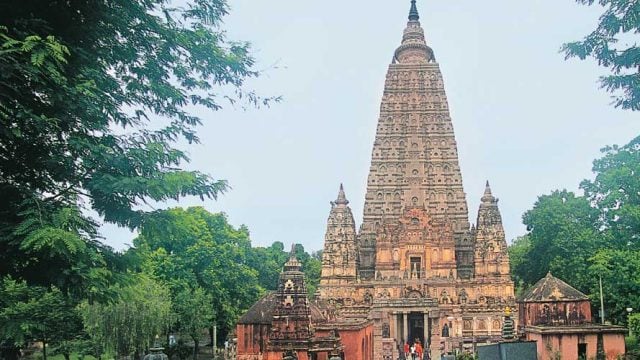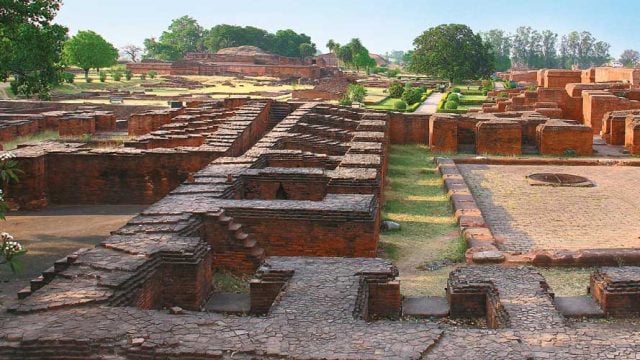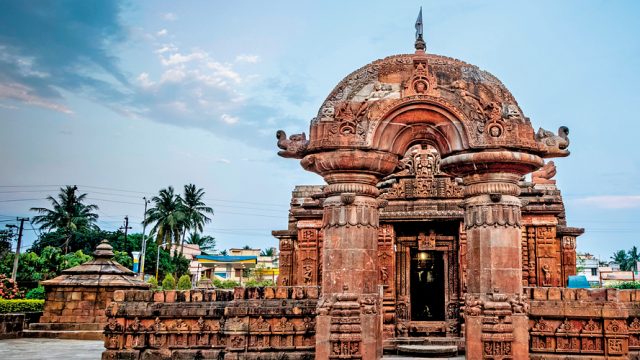Saran District is one of the thirty-eight districts of Bihar. It is also known as Chhapra district
Marhaura does not have any tourist sites, while Chhapra can be seen in a day. Sonepur is best visited during the Sonepur Mela.
What to See & Do
Chhapra
Chhapra was the district headquarters of the old Saran district. It was also an important place under the Mughals: Ain–e–Akbari, Emperor Akbar’s official chronicle describes the area as “Saran Sarkar”, one of the six revenue divisions of Bihar. Even after the East India Company acquired the Diwani of this region in 1756, Saran remained an important revenue unit.
Six kilometres east of Chhapra lies Chirand, where excavations have been conducted by the Directorate of Archaeology and Museums in Bihar since the early 1960s, unearthing a wealth of archaeological treasures. Chirand is a stratified Neolithic, Chalcolithic, and Iron Age settlement, between 2500 BCE and 30 CE. The Neolithic occupation (2500-1345 BCE) contains evidence of small circular huts, and small scale farming of wheat, rice, mung, masoor and peas. Tools made of stone as well as bone have been found here, although the number of bone tools were more. Hammers, millers, pestles, quern stones and balls have also been discovered. Additionally, several microliths
been unearthed here, which constituted an integral part of the Neolithic Chirand. Parallel-sided blades, scrapers, arrow-heads, points, lunates, borers and some geometric shapes were the main microlith objects. A copper plate dating from
898 CE issued during the reign of Pratihara King Mahendra Paladeva is perhaps the oldest temple record from Saran. A visit to these sites of Chirand is awe inspiring: a chance to step back in time to imagine how our ancestors lived aeons ago.

Aami Mandir
East of Chhapra, in Aami village lies an ancient temple, Aami Mandir or Ma Ambika Asthan, dedicated to the Goddess Ambika, also known as Durga, Sati, and Parvati, the consort of Shiva. This mandir is a shakti peeth.
Legends & Mythology
Sati, distressed at insults meted out to Shiva by her father King Daksha at a yagna the king was hosting, committed self-immolation, after praying that in her next birth she be born to a father whom she could respect. Shiva was so enraged at hearing of his wife’s death, that he summoned fearsome demons from the locks of his matted hair, who stormed the ceremony, wreaked mayhem and decapitated Daksha, thus killing him. When the people begged from clemency, Shiva spared them and even brought back Daksha to life, albeit with a goat’s head. Grief-stricken, he then picked up the body of his beloved wife and went away, roaming the earth with her body in his arms. To calm Shiva, Lord Vishnu used his sudarshan chakra to dismember Sati’s body in 51 pieces, and in her next life, Sati was reborn as Parvati. The places where the parts of the goddess’s body fell are the 51 shakti peeths in India.
Pilgrims flock the temple daily, but it is most crowded around Shivratri and Navratri (Dusshera). Near the shrine is a garden with a well where devotees offer water.
Harihar Nath Temple
The Harihar Nath temple itself is said to have been originally built by Lord Rama. The present structure is simple, and was built by Raja Ram Narain of Bihar during the late Mughal period. It has now been refurbished by the Birlas.
The temple is also considered to be the site of the Gaj-Grah (elephant-crocodile) battle and the subsequent rescue of the Gaj by Lord Vishnu.
Legends & Mythology
In ancient times, this place was home to a herd of elephants and their king, Gajendra. One day, Gajendra reached a lake with his herd, and entered first to check if the waters were safe. Suddenly, a crocodile who lived in the lake caught Gajendra’s foot, and thus began an epic battle. No one could help Gajendra and so he struggled against the might of the crocodile for a thousand years. Eventually, the elephant’s strength began to wane.
Realising he was about to die, he called out to Lord Vishnu. Hearing his devotee’s call, Vishnu rushed to his aid. As Gajendra saw his deliverer, he lifted a lotus flower with his trunk to Vishnu. The god, pleased with Gajendra’s obeisance, killed the crocodile with his sudarshan chakra. As Gajendra thanked the lord, Vishnu told him that he, Gajendra had been King Indradyumna in his previous birth. He had been cursed to be born as an elephant in his next birth by the great Sage Agastya. Similarly, the crocodile too had been a gandharva (celestial nature spirit) called Huhu. Cursed by Sage Devala for interrupting his prayers, Huhu was born as a crocodile. After he begged forgiveness, the sage told him that he would be released from his birth as a crocodile by Lord Vishnu. Thus, both gaj and grah were delivered from their curses by Vishnu.
There are several smaller temples nearby, including the Panch Devta Mandir and the Kali Asthan.

Where to Stay & Eat
Chhapra’s only choices are Hotel Indralok in Leh Bazaar (Tel: 06152-245349, Cell: 09931531859; Tariff: ₹700-1,500), Hotel Midtown (Tel: 245276, Cell: 08271228880, 09470850128, 09473057681; Tariff: ₹1,250-1,500) at Municipal Chowk and Hotel Coffee House (Tel: 238178; Tariff: ₹300-500), also at Municipal Chowk. All have basic facilities and they only accept payment in cash.
Chhapra
heritage
India





